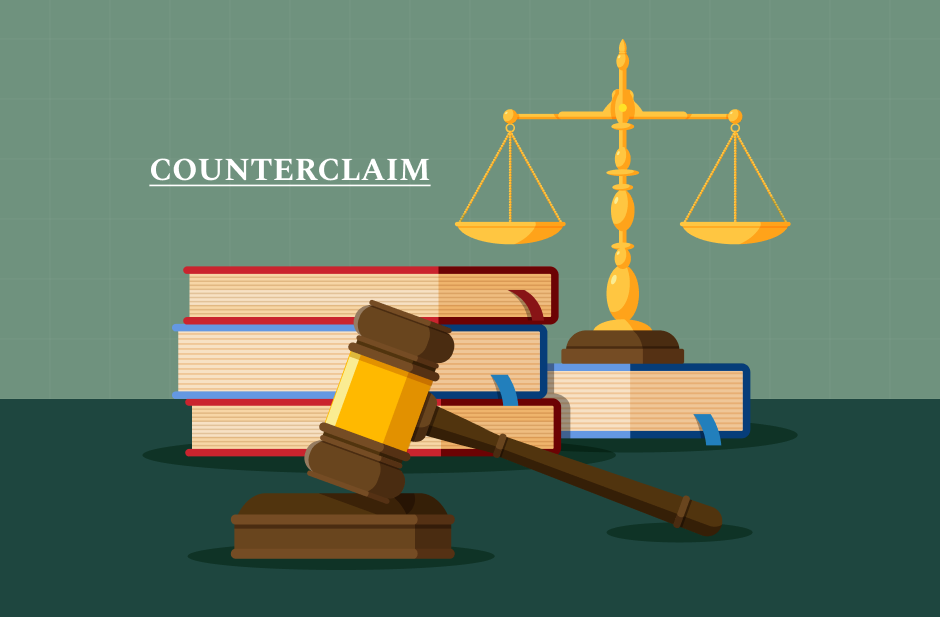You might have heard about the legal term general power of attorney. It is the form of power of attorney that allows agents to take any legal actions their principals might take.
Are you ready to take charge of your legal affairs? Let’s start by filling out the general power of attorney form. It’s a crucial step in ensuring your rights are protected and your wishes are fulfilled. Let me guide you through the process.
What Is The General Power Of Attorney Form?
Alright, let’s talk about the General Power of Attorney form – a document that might not sound as thrilling as a superhero movie, but it’s certainly a hero in the world of legal affairs. Imagine it as a magic wand that lets someone you trust handle your financial and legal matters when you can’t.
So, What’s the deal with this form?
Well, it’s like appointing a financial wingman (or woman) to step in and manage your affairs if you’re unable to do so. This could be due to illness, a sudden overseas adventure, or any other reason that temporarily takes you out of the driver’s seat of your life.
The General Power of Attorney form is pretty versatile. It gives your chosen agent – that’s the person you trust – the authority to make decisions on your behalf. These decisions can range from paying bills, managing bank accounts, selling property, signing contracts, and even filing your taxes. Essentially, it covers a broad spectrum of financial and legal tasks.
But remember, this power isn’t forever and isn’t an all-access pass to your life. It comes with an expiration date or a specific trigger event. You can set the terms as you see fit. Maybe you only need your agent to step in for a short time, or maybe you want them to take over only if you become incapacitated. It’s your call.
Now, let’s get a bit more serious for a moment. Choosing your agent is a big deal. This person should be someone you trust implicitly because they’ll have access to your financial and legal matters. It could be a family member, a close friend, or even a legal professional. Whoever it is, make sure they’re up for the task and are aware of your wishes.
Keep In Mind!
The general power of attorney is not a one-size-fits-all document either. Different states and nations might have their own rules and requirements for this form, so it’s a good idea to consult with a legal expert or use a template that complies with local regulations.
One more thing to keep in mind is that this power doesn’t extend to healthcare decisions. For medical matters, you would need a separate document called a healthcare proxy or medical power of attorney.
So, there you have it, the General Power of Attorney form in a nutshell. It’s like a legal safety net, giving you peace of mind that someone you trust can take the reins when life gets a bit too complicated. Just remember to wield this power wisely and choose your agent with care.
How To Fill Out A General Power Of Attorney?
Filling out a general power of attorney might sound like a daunting task, but fear not. It’s a crucial legal document that can give someone you trust the power to make important decisions on your behalf. Whether you’re planning for the future or dealing with an urgent situation, here’s a step-by-step guide to help you navigate the process smoothly. Grab a pen, and let’s get started!
Step 1: Download a Template or Consult an Attorney
First things first, you’ll need a general power of attorney form. You can usually find one online, or better yet, consult with an attorney to ensure it meets your specific needs. They can provide valuable advice tailored to your situation.
Step 2: Identify Yourself and Your Agent
Begin by filling in your personal details at the top of the form. This includes your name, address, and contact information. Below that, identify the person (your agent) you’re entrusting with power of attorney. Write their full name and contact info as well.
Step 3: Specify the Powers
This is where you define the scope of your agent’s authority. Be clear and comprehensive. You can specify financial, legal, medical, or other specific powers you want to grant. Make sure you’re comfortable with what you’re delegating.
Step 4: Date the Document
Add the date when you’re executing the power of attorney. This is important for legal purposes, as it establishes when the document becomes effective.
Step 5: Sign and Notarize
Now, it’s time for your John Hancock. Sign your name at the bottom of the document. Depending on your location and document’s requirements, you might need to have your signature notarized. A notary public will verify your identity and witness your signature, making the document legally binding. If you’re unsure about the notarization process or specific legal requirements, you could consult a Power of Attorney Lawyer in New York, or a local professional to make sure everything is executed correctly.
Step 6: Witnesses
In some jurisdictions, you may need one or more witnesses in addition to notarization. The witnesses will also sign the document to confirm that you signed it willingly and were sound-minded when you did so. If you don’t have witnesses, you can hire a commissioner of oaths calgary, or local solicitors, who are qualified to act in that role for you.
Step 7: Keep Copies
Make copies of the completed and signed General Power of Attorney. Share a copy with your agent your attorney (if you have one), and keep one for yourself. Keep them in a safe and accessible place.
Step 8: Review and Update as Necessary
Life changes, and so might your needs and preferences. Regularly review your General Power of Attorney to ensure it still reflects your wishes. If anything changes, update the document accordingly and inform your agent.
Filling out a General Power of Attorney is a responsible and thoughtful way to prepare for the unexpected or plan for the future. Remember, this document grants significant authority, so choose your agent wisely. Consult with a legal professional for guidance if you have any doubts or unique circumstances.
Now, go ahead and tackle that Power of Attorney with confidence. It’s a small step that can make a world of difference in ensuring your wishes are respected when you can’t make decisions for yourself. Cheers to responsible planning!
Form Samples Of How To Fill Out A General Power Of Attorney Form
Hey there! So, you’ve got a general power of attorney form in front of you, and you’re ready to take charge of some important legal matters. Great! Let’s break it down in a sample form of a general power of attorney form.
[Step 1: Understanding the Basics]
First thing first, take a good look at the form. You’ll see fields for your personal information and the person you’re appointing as your agent. It’s like choosing your legal superhero!
[Step 2: Your Information]
Start by filling out your name, address, and other personal details. Imagine you’re introducing yourself at a party- be clear and accurate.
[Step 3: Your Agent’s Information]
Next up, provide the name, address, and contact information of the person you’re trusting with your powers. This person is your “attorney, in fact”; they’ll be handling things on your behalf.
[Step 4: Powers Granted]
Now, here’s where it gets interesting. You need to specify what powers you’re giving to your agent. It’s like writing a to-do list, but it’s legally binding. Describe in clear terms what your agent can and cannot do. For example, can they handle your finances, sign contracts, or make medical decisions for you? Be specific!
[Step 5: Duration]
Decide how long your agent’s powers will last. Is it temporary, or will it last indefinitely until you revoke it? Make your choice, and don’t forget to include start and end dates if necessary.
[Step 6: Signatures]
Here comes the grand finale! Sign and date the form in front of a notary public or witnesses as required by your jurisdiction. This step is like sealing a friendship with a handshake – it makes everything official.
[Step 7: Notarization or Witnesses]
If your area requires notarization, visit a notary public, present your ID, and sign the document in their presence. If witnesses are required, have two unrelated individuals watch you sign and then sign as witnesses themselves.
[Step 8: Copies and Storage]
Don’t forget to make copies of the signed form. Keep the original in a safe place, and give copies to your agent and any institutions or individuals who might need to verify your agent’s authority.
[Step 9: Review and Update]
Lastly, remember that life changes. Review your power of attorney periodically, especially if your circumstances or relationships change. You can always update it or revoke it if needed.
And there you have it! You’ve successfully filled out your General Power of Attorney form. This document ensures your wishes are carried out when you can’t do it yourself. Just like a trusty sidekick, your agent is there to have your back. If you have any doubts or questions, consult with a legal professional for guidance. Legal matters can be complex, but with this document, you’re taking an important step in protecting your interests.
What Is The Limit Of Control In Colorado’s General Power Of Attorney Form?
Hey there! When it comes to the limit of control in Colorado’s General Power of Attorney form, it’s like drawing a line in the sand – it defines what your trusted agent can and can’t do on your behalf. Let’s dive into this topic in a conversational way.
The “Superpowers” of a General Power of Attorney in Colorado
Think of your General Power of Attorney as a comic book and your agent as the superhero you’re empowering. Colorado’s form allows you to grant your agent a wide range of powers, but remember, with great power comes great responsibility.
Your agent can typically handle various financial and legal matters for you. This might include managing your bank accounts, paying bills, selling property, or signing contracts. It’s like giving them access to your financial fortress.
Setting Boundaries
Just like a superhero with boundaries, you can also specify limits. For example, you might want to exclude certain powers, like making medical decisions or changing your will. You have the flexibility to customize the form to your needs.
In Colorado, the law is on your side, ensuring that your agent acts in your best interest. They’re like your legal guardian, so they should always prioritize your well-being.
Time Matters
Consider the timeframe, too. You can make your agent’s powers effective immediately, or you can set a specific start date, like when you’re traveling abroad and need someone to manage your affairs temporarily. You can even make it “durable,” meaning it remains in effect if you become incapacitated.
Review and Update
Life is full of surprises, and sometimes, even superheroes need to change their tactics. Regularly review your Power of Attorney to ensure it still aligns with your wishes. If you need to make updates or revoke it altogether, Colorado’s got you covered.
Seek Legal Guidance
While this conversation gives you a broad idea, remember that legal matters can be intricate. If you’re unsure about the limits of control or need personalized advice, it’s always a good idea to consult with a legal professional. They’re like the wise sage who can guide you through the legal maze.
So, there you have it, a conversational take on the limit of control in Colorado’s General Power of Attorney form. It’s a powerful tool to ensure your financial and legal affairs stay in capable hands when you can’t manage them yourself.
Final Thoughts
The general power of attorney form is a crucial document that allows you to have better control over your legal affairs. This form will give the freedom to your agent you are determining to have better control over various vital decisions within your life.
Having an experienced lawyer by your side can effectively allow you to have a better understanding of filling out the form. I hope you have enjoyed the article and found it useful.
Read Also:
















